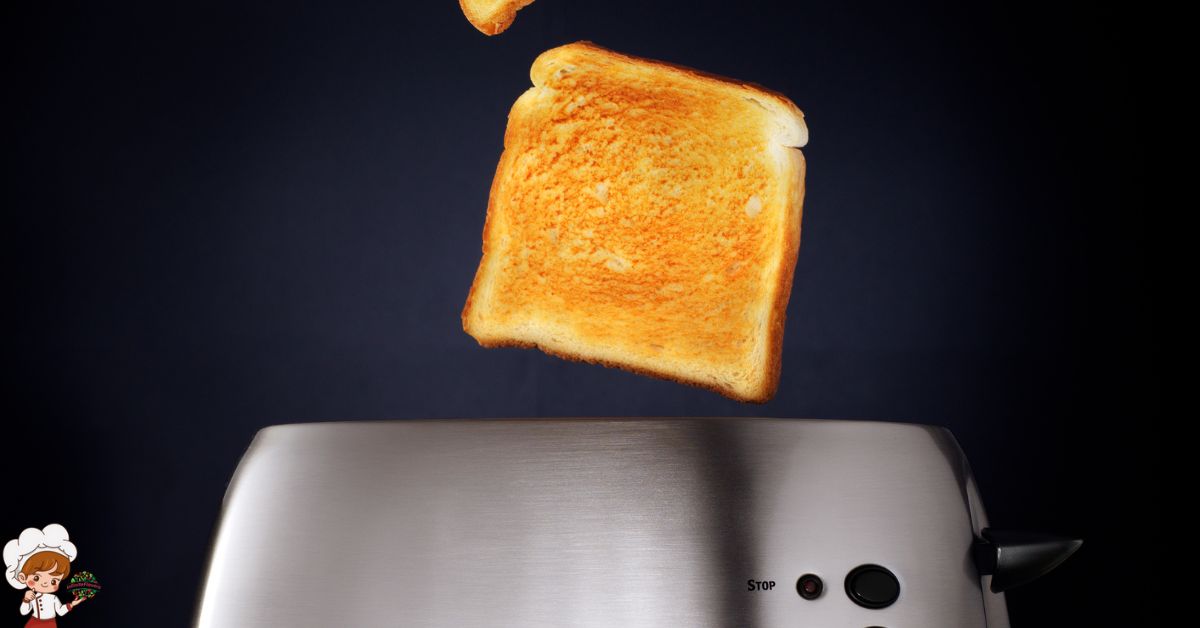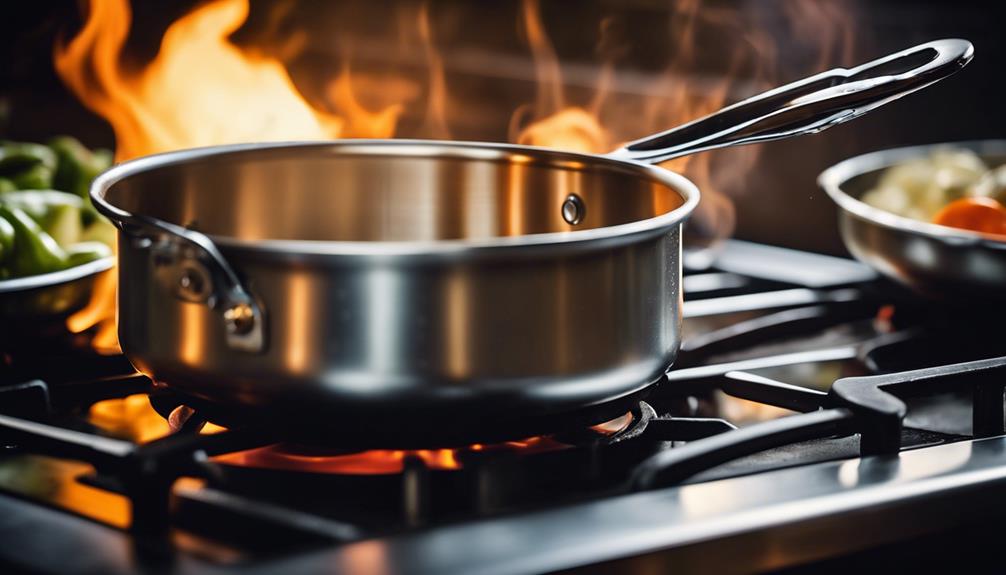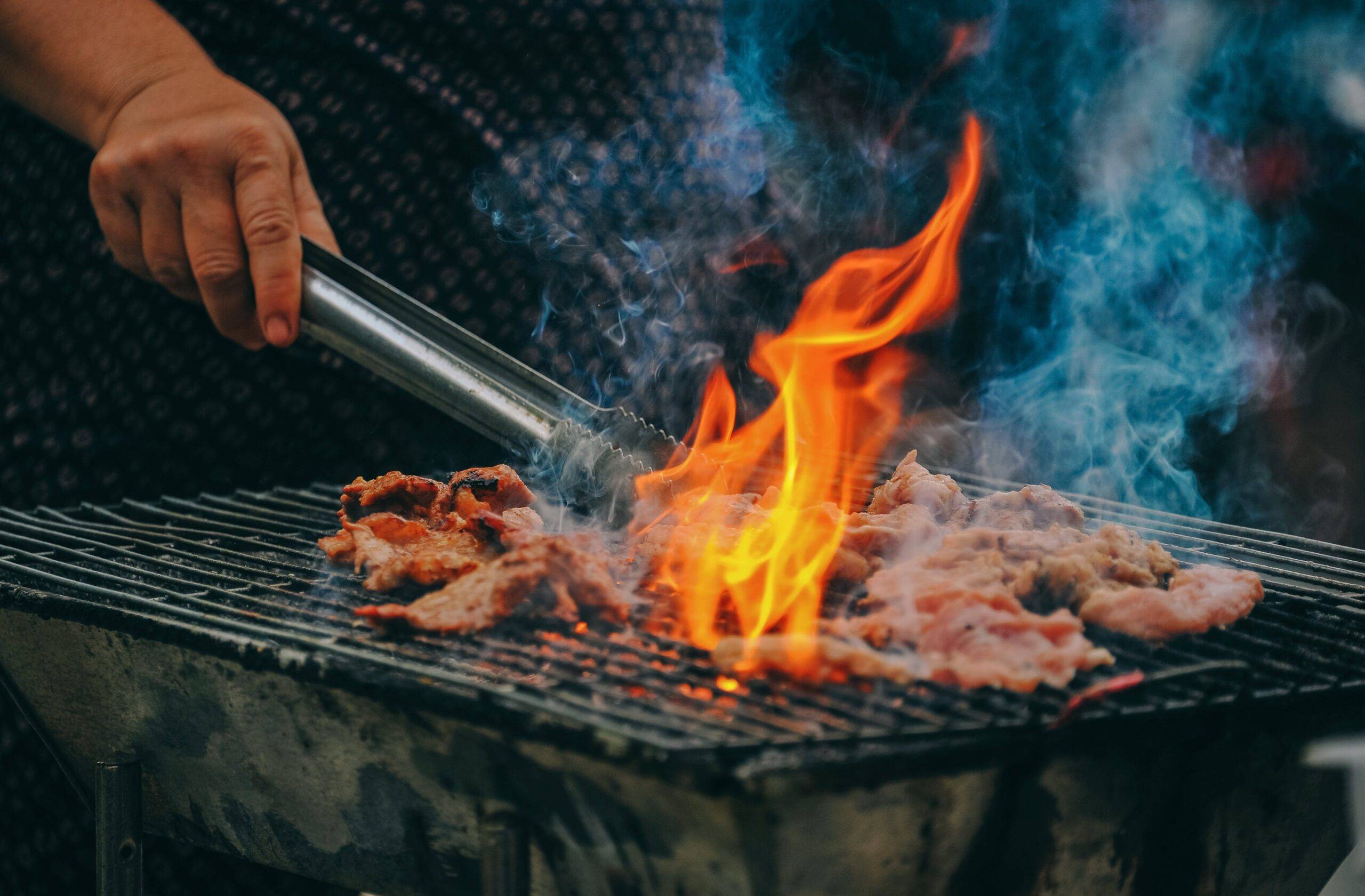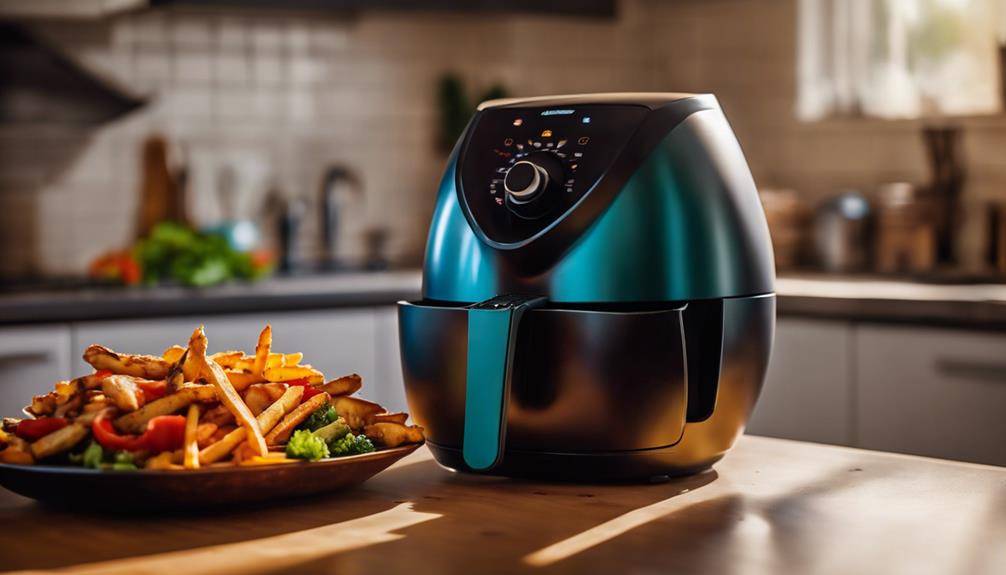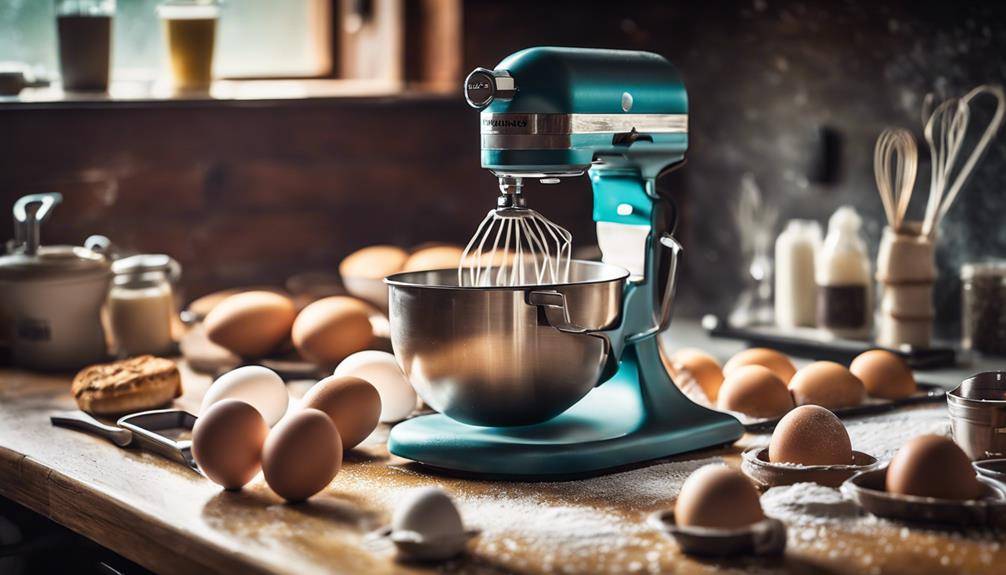Amazing Cast Iron Skillet For Outdoor Grilling
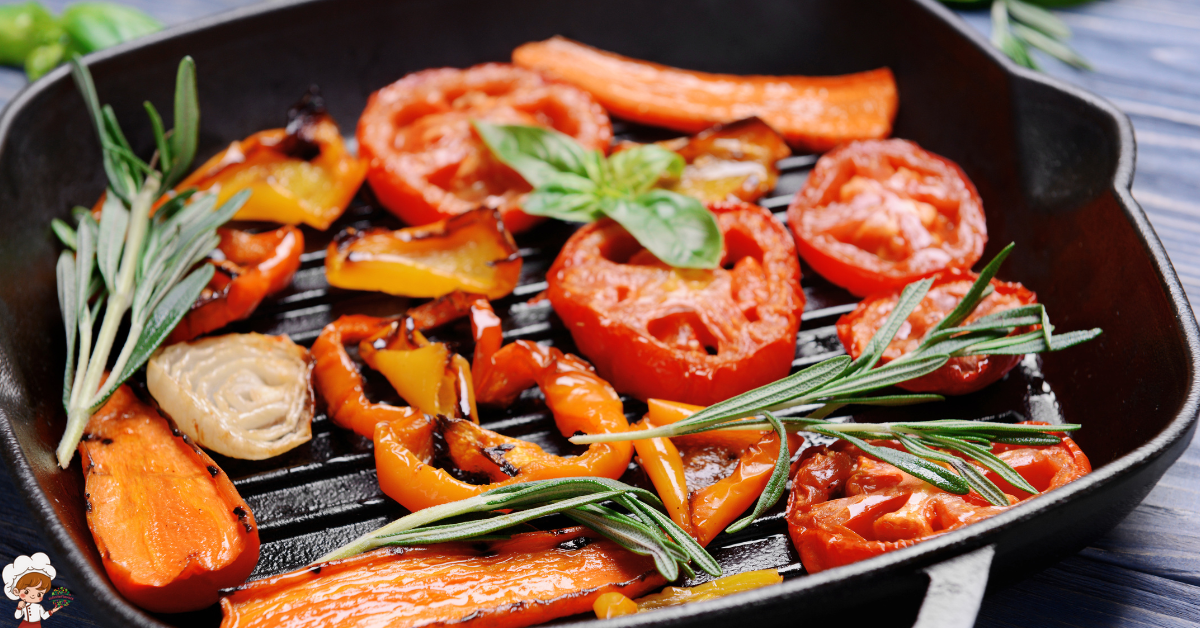
Using a Cast Iron Skillet For Outdoor Grilling is a game changer. These skillets provide exceptional heat retention and even cooking, ensuring your food is perfectly seared and flavorful. They’re durable and can handle high temperatures, making them ideal for grilling meats and veggies alike. To prep, clean your skillet, season it with oil, and preheat it well for best results. Remember to manage temperature and avoid overcrowding for that perfect crust. If you’ve got a thirst for delicious recipes and cooking tips, you might find it worthwhile to explore further.
Benefits of Cast Iron Skillets
Cast iron skillets offer exceptional heat retention and even cooking, making them perfect for grilling your favorite dishes. When you fire up the grill, you want reliable equipment that can handle high temperatures without warping or cracking. That’s where cast iron durability comes into play. These skillets are built to last, able to withstand years of use without losing their effectiveness. You won’t have to worry about replacing your skillet after a few seasons; it can become a family heirloom with proper care.
Another significant advantage of using cast iron is its outdoor versatility. Whether you’re grilling burgers, sautéing vegetables, or even baking cornbread, a cast iron skillet can handle it all. Its ability to shift from stovetop to grill to oven makes it an incredibly flexible tool for outdoor cooking. Plus, the non-stick surface created by seasoning allows for easy food release, and cleanup becomes a breeze.
When you’re cooking outdoors, the even heat distribution of cast iron guarantees that your food cooks uniformly, preventing hot spots that can ruin a meal. You’ll find that steaks sear beautifully, and veggies achieve that perfect char. With your cast iron skillet, you can experiment with different techniques and recipes, all while enjoying the durability and versatility that it brings to your outdoor cooking experience. So grab your skillet, and get ready to elevate your grilling game!
Choosing the Right Skillet
When you’re choosing the right cast iron skillet, consider both size and weight to match your cooking style. A skillet that feels comfortable in your hand will make all the difference, especially when you’re grilling. Pay attention to the handle and grip features, as they can enhance your overall grilling experience.
Size and Weight Considerations
Choosing the right skillet size and weight often makes a significant difference in your grilling experience. When you’re selecting a cast iron skillet, consider the skillet dimensions carefully. A larger skillet allows you to cook more food at once, making it ideal for gatherings. However, if it’s too big for your grill, you might struggle with heat distribution and uneven cooking.
Weight distribution is another essential factor. A heavier skillet retains heat better, which can enhance your grilling results, but it can also be cumbersome to handle. If you’re planning to transport your skillet to a picnic or campsite, a lighter option may be more practical.
Think about your grilling style, too. If you often cook for a crowd, a larger skillet could serve you well. On the other hand, if you’re grilling for just a couple of people, a smaller, lighter skillet might be your best bet. Ultimately, the right balance between size and weight will help you master outdoor grilling while ensuring you enjoy the process. So, take your time to choose wisely, and you’ll be well on your way to delicious grilled meals.
Handle and Grip Features
A skillet’s handle and grip features can greatly influence your comfort and safety while grilling, so it is vital to select one that feels secure in your hand. Look for a skillet with an ergonomic design that fits comfortably in your grip, reducing fatigue during long cooking sessions. A well-designed handle will allow you to maneuver the skillet easily, especially when it’s hot and heavy.
Heat resistance is another essential aspect. Opt for a handle that can withstand high temperatures without becoming too hot to touch. Some skillets come with silicone or rubber grips that provide added protection against heat, making it safer to handle. Additionally, a long handle can keep your hand farther from the heat source, enhancing safety.
It’s also worth considering the shape of the handle. A slightly curved or contoured handle can offer a more natural grip, further improving your control. Don’t forget to check for a helper handle on the opposite side, which can be incredibly useful when you need to lift or move the skillet. Prioritize these features to guarantee a safe and enjoyable grilling experience.
Prepping Your Skillet for Grilling
Prepping your cast iron skillet for grilling guarantees even heat distribution and prevents food from sticking. First, make certain your skillet is clean and free of any leftover debris. If it’s not seasoned yet, you’ll want to apply a thin layer of vegetable oil or flaxseed oil to the cooking surface. This creates a non-stick barrier and enhances the skillet’s longevity.
Next, heat your skillet over medium-high heat on the grill for about 5 to 10 minutes. You’ll know it’s ready when you can sprinkle water on the surface, and it dances around before evaporating. This step is vital for achieving that perfect sear on your food.
After preheating, you can add a bit more oil to the skillet to prevent sticking. Remember, using oils with high smoke points, like canola or grapeseed oil, is fundamental for outdoor grilling.
A key skillet preparation tip is to verify you’re using the right size skillet for your grilling needs. A larger skillet works well for batch cooking, while a smaller one is perfect for single servings.
Once you’ve got everything ready, you’re set to start grilling. Follow these skillet preparation tips, and you’ll have a stress-free grilling experience—one of the fundamental outdoor grilling essentials. Enjoy your cooking adventure!
Essential Cooking Techniques
To get the most out of your cast iron skillet while grilling, mastering a few essential cooking techniques is key. You’ll want to focus on preheating the skillet, managing temperature control, and seasoning for flavor. These steps will help elevate your grilling game and guarantee delicious results every time.
Preheating the Skillet
Preheating your cast iron skillet guarantees that you’ll achieve a perfect sear on your grilled foods. A properly heated skillet enhances flavor and texture, making your meals truly memorable. To get started, place your skillet over direct heat. Aim for a skillet temperature of around 400 to 450 degrees Fahrenheit for ideal grilling.
Let the skillet preheat for about 10 to 15 minutes; this duration guarantees even heating throughout the pan. You can test the skillet’s readiness by sprinkling a few drops of water on its surface. If they sizzle and evaporate almost immediately, you know it’s hot enough.
Keep in mind, every grill varies, so you may need to adjust your preheat duration slightly depending on your specific setup. Once your skillet reaches the right temperature, it’s time to add your ingredients. This initial step is essential, as it helps lock in moisture and creates that delicious, crispy crust. Remember, patience pays off when preheating; rushing this process can lead to uneven cooking and disappointing results. With the right prep, you’re all set to grill up some fantastic outdoor meals!
Managing Temperature Control
Managing temperature control is vital for achieving consistent results when grilling with a cast iron skillet, as it allows you to perfectly sear meats while avoiding overcooking. To master temperature management, you need to understand how heat distribution works in your skillet. When you place your skillet over direct heat, it’s important to let it heat evenly before adding your food.
Use a thermometer to check the skillet’s surface temperature. If you don’t have one, you can sprinkle a few drops of water on the skillet—if they dance and evaporate quickly, you’re ready to go. Once you add your meat, avoid moving it around too much; this guarantees a nice crust forms, enhancing flavor and texture.
If you’re grilling thick cuts, consider using indirect heat to cook them through without burning the outside. You can achieve this by shifting coals away from the skillet or using a two-zone fire. Remember, you can always adjust the heat by raising or lowering your skillet’s position over the flames. Effective temperature management will elevate your outdoor grilling experience and make sure your meals come out perfectly cooked every time.
Seasoning for Flavor
Seasoning your cast iron skillet not only enhances the flavor of your grilled dishes but also creates a natural non-stick surface that improves with each use. This process involves applying a layer of oil and heating it to a high temperature, allowing the oil to bond with the skillet’s surface. Over time, this builds up a protective layer that adds depth to your cooking.
To maximize flavor, consider using various spice blends during the seasoning process. For instance, mixing oils with herbs and spices like garlic powder, paprika, or black pepper can infuse your skillet with unique flavor profiles. The more diverse the spice blends you use, the richer the seasoning becomes, enhancing everything you cook.
When grilling, remember that the flavors from your seasoned skillet will transfer to your food. Whether you’re grilling meats or vegetables, the seasoned surface will elevate your dishes with a subtle, savory taste. So, don’t shy away from experimenting with different oils and spices to find the combination that best suits your palate. With each use, your skillet will not only improve its non-stick qualities but also develop a remarkable flavor that you’ll cherish.
Best Foods to Cook
When grilling with a cast iron skillet, you’ll find that vegetables, meats, and even fruits can achieve mouthwatering flavors and perfect char marks. For starters, consider grilling seasonal vegetables like zucchini, bell peppers, and asparagus. Toss them in olive oil and your favorite seasonings, then let the skillet work its magic. The high heat creates a beautiful char while keeping the veggies tender.
Meat lovers will appreciate the versatility of a cast iron skillet for grilling steaks, chicken, and pork chops. Season your choice of meat with salt, pepper, and perhaps a dash of garlic powder. Preheat your skillet until it’s smoking hot, and then sear the meat to lock in the juices. You’ll love the crispy crust and juicy interior that comes from this method.
Don’t forget about grilled seafood! Shrimp, scallops, and fish fillets grill beautifully in a cast iron skillet. Marinate your seafood in a zesty citrus blend, and grill them for just a few minutes on each side. The skillet gives them a delightful grilled flavor that pairs wonderfully with a fresh salad or rice.
Grilling Breakfast in a Skillet
Grilling breakfast in a cast iron skillet opens up a world of delicious possibilities. You can whip up perfect pancakes every time, and create sizzling breakfast hash that’ll please everyone at the table. Let’s explore how to make your mornings even tastier!
Perfect Pancakes Every Time
A cast iron skillet is your secret weapon for flipping perfect pancakes every time. With its even heat distribution, you’ll achieve a golden-brown crust that’s hard to beat. Start by preheating your skillet over medium heat. Once it’s hot, add a little oil or butter for that non-stick finish.
Next, pour your pancake batter into the skillet, using a measuring cup for uniformity. Watch for bubbles forming on the surface; this is your cue for pancake flipping. When the edges start to set and bubbles appear, it’s time to flip. Gently slide a spatula underneath and turn it over with confidence.
After a couple of minutes on the other side, you’ll have fluffy, perfectly cooked pancakes. Now comes the fun part: pancake toppings! Whether you’re into maple syrup, fresh fruits, or whipped cream, the options are endless. You can even get creative by adding chocolate chips or nuts to the batter before cooking. With your cast iron skillet, breakfast becomes a delicious adventure, and you’ll impress everyone with your pancake flipping skills. Enjoy your perfectly grilled pancakes!
Sizzling Breakfast Hash Ideas
Start your day off right with a sizzling breakfast hash that’s easy to whip up in your cast iron skillet. This versatile dish allows you to get creative with hash ingredient combinations that suit your taste. You can mix diced potatoes with bell peppers, onions, and your choice of protein like sausage or bacon.
For a healthier twist, try sweet potatoes, kale, and turkey bacon. Don’t forget to season your hash with herbs and spices to elevate those flavors.
You can also explore skillet breakfast variations by adding eggs on top. Simply create wells in your hash and crack an egg into each one. Cover the skillet and let it cook until the eggs are set to your liking.
Feeling adventurous? Toss in some cheese or avocado for a creamy finish. Whether you prefer a classic or a twist on tradition, your cast iron skillet makes it all possible. So, fire up that grill, gather your favorite ingredients, and enjoy a hearty breakfast that’ll keep you fueled for the day ahead. The possibilities for your breakfast hash are endless!
Searing Meats Perfectly
Searing meats perfectly in a cast iron skillet locks in juices and creates a delicious crust that enhances flavor. To achieve this, you’ll want to use effective cooking techniques that elevate your grilling game. Start by preheating your skillet over medium-high heat until it’s smoking hot. This step is essential, as a hot skillet guarantees that you get that beautiful sear.
Before you place your meat in the skillet, don’t forget about meat marinades. A good marinade not only adds flavor but also helps tenderize the meat. Let your cuts soak for at least 30 minutes, or even overnight, for the best results. When you’re ready to cook, remove excess marinade to avoid steaming the meat.
When searing, avoid overcrowding the skillet. If you pack in too much meat, it’ll lower the skillet’s temperature, preventing that coveted crust from forming. Instead, work in batches if needed. Once you lay the meat down, resist the urge to move it around. Let it sit for about 3-5 minutes, allowing a crust to form before flipping.
After flipping, cook until the meat reaches your desired doneness. Use a meat thermometer for precision. Once done, let the meat rest for a few minutes before slicing. This resting period allows the juices to redistribute, guaranteeing every bite is flavorful and juicy. With these techniques, you’ll master the art of searing meats perfectly every time.
Vegetables and Sautéing Tips
Revealing the full flavor of vegetables in a cast iron skillet requires the right sautéing techniques to guarantee they’re both tender and vibrant. Start by choosing a variety of colorful, fresh vegetables. Bell peppers, zucchini, onions, and mushrooms work wonderfully for grilled vegetables. Cut them into uniform pieces to ensure even cooking.
Before you begin, preheat your cast iron skillet over medium-high heat. Once hot, add a generous amount of oil—olive oil or avocado oil works best—to prevent sticking and promote that lovely caramelization. When the oil shimmers, it’s time to add your veggies. Arrange them in a single layer; overcrowding the pan leads to steaming instead of sautéing.
Utilize effective sautéing techniques by stirring frequently but not constantly. This allows the vegetables to sear and develop a rich flavor. You want them to soften while still retaining some crunch. Season with salt, pepper, and any other spices you enjoy, like garlic powder or smoked paprika, to enhance the taste.
If you want to add extra depth, consider adding fresh herbs like thyme or rosemary towards the end of cooking. They’ll infuse your grilled vegetables with aromatic flavors. Once they’re tender and slightly charred, remove them from the skillet and serve immediately. Enjoy the vibrant colors and flavors that a cast iron skillet brings to your outdoor grilling experience!
Baking in a Cast Iron
Baking in a cast iron skillet opens up a world of possibilities, allowing you to create everything from cornbread to pizzas with that signature crispy crust. When you’re outdoors, using your grill as an oven can elevate your baking game. The key is to master a few baking techniques tailored for cast iron.
Start by preheating your skillet on the grill for about 10 minutes. This step guarantees even heat distribution, essential for achieving that perfect rise and golden finish. For bread, like cornbread, whisk your ingredients well and pour the batter into the hot skillet. The sizzling sound as the batter hits the pan is music to your ears; it means you’re on the right track.
Don’t limit yourself to savory dishes. You can whip up outdoor desserts that will impress your friends and family. Think of baking brownies or a fruit cobbler in your cast iron skillet. Layer fresh fruit at the bottom, sprinkle with sugar, and top with a simple batter. Cover with foil and place it on the grill for a delightful sweet treat.
Cleaning and Maintenance
Keeping your cast iron skillet in top shape requires regular cleaning and maintenance to guarantee its longevity and cooking performance. After each use, you should clean your skillet promptly to prevent food residues from hardening. For basic cleaning, use warm water and a stiff brush or sponge. Avoid using soap, as it can strip the skillet’s seasoning. If there are stubborn bits stuck on, try using a scraper or a mixture of coarse salt and water as a gentle abrasive.
For more intensive cleaning techniques, you might need to resort to the oven or stovetop. Heat the skillet on low for a few minutes to loosen any stuck-on food, then wipe it clean. If your skillet has rust spots, you can scrub them with fine steel wool, but be sure to re-season the skillet afterward.
When it comes to maintenance tips, always dry your skillet thoroughly after washing. Moisture is the enemy of cast iron, leading to rust. You can place it on a low heat for a few minutes to evaporate any remaining water. After drying, apply a thin layer of vegetable oil or flaxseed oil to maintain the seasoning and prevent rust. Store your skillet in a dry place, ideally with a paper towel inside to absorb any excess moisture.
Seasoning Your Skillet
Seasoning your cast iron skillet is essential for creating a non-stick surface and enhancing its durability. This process involves applying a layer of oil and heating it, allowing the oil to bond with the iron. You can use various seasoning techniques, but a common one is to clean your skillet thoroughly, apply a thin layer of vegetable oil, and bake it upside down in the oven at a high temperature for about an hour. This method encourages even seasoning and minimizes sticky spots.
After your skillet’s first seasoning, you should aim to maintain it regularly. Seasoning frequency depends on how often you use your skillet. If you’re grilling outdoors frequently, consider re-seasoning every few uses. After cooking, clean your skillet gently with hot water and a soft brush. Avoid soap, as it can strip the seasoning. If you notice food starting to stick, it’s a sign that your skillet needs another seasoning session.
When seasoning, remember to keep the layer of oil thin. Too much oil can lead to a sticky surface instead of a smooth, non-stick one. You can also experiment with different oils, such as flaxseed oil or grapeseed oil, which have high smoke points and can create a robust seasoning layer. With a little care and the right seasoning techniques, your cast iron skillet will serve you well for many outdoor grilling adventures.
Safety Tips for Outdoor Cooking
When grilling outdoors, always prioritize safety by keeping a fire extinguisher nearby and verifying your cooking area is free of flammable materials. This means clearing away any dry leaves, cloth, or other debris that could catch fire. Remember, fire safety is key to enjoying your outdoor cooking experience without any mishaps.
Next, set up your grill on a stable surface, away from overhanging branches or structures. If you’re using charcoal, allow the coals to cool completely before disposing of them. For propane grills, check for leaks in your gas lines before starting the flame. If you smell gas, turn off the grill and fix the issue before proceeding.
Food hygiene is just as important as fire safety. Make sure you wash your hands before handling food and keep a separate cutting board for raw meat to avoid cross-contamination. Use a meat thermometer to verify your food reaches safe temperatures. Keep perishable items chilled until you’re ready to cook, and don’t leave food out in the sun for too long.
Lastly, never leave your grill unattended. This verifies you can quickly respond to any flare-ups or accidents. By following these safety tips, you’ll create a secure environment for outdoor grilling, allowing you to focus on enjoying delicious meals with friends and family. So gear up, stay safe, and have fun grilling!
Comparing Cast Iron to Other Cookware
When you’re choosing cookware, cast iron stands out for its incredible heat retention. This feature not only helps you achieve consistent cooking temperatures but also enhances the flavors of your food. Let’s compare these benefits to other common cookware options to see why cast iron might be your best choice.
Heat Retention Comparison
Cast iron skillets excel in heat retention, allowing you to maintain consistent cooking temperatures better than many other cookware options. This superior heat retention leads to excellent heat distribution, ensuring that your food cooks evenly without hot spots. Unlike lighter materials, such as aluminum or non-stick pans, cast iron holds its heat longer, which means you won’t have to crank up the heat as often to achieve desired results.
When you’re grilling outdoors, this quality enhances your cooking efficiency. You can sear meats perfectly, achieving that ideal crust while keeping the inside juicy. Once the skillet is hot, it stays hot, making it perfect for tasks like sautéing vegetables or finishing off your dish with a quick heat boost.
While other pans may cool down quickly when you add cold ingredients, a cast iron skillet retains its temperature, allowing you to maintain control over the cooking process. This leads to better results in your grilling endeavors, as you can focus on flavor and technique without worrying about temperature fluctuations. Investing in a cast iron skillet means investing in consistent, efficient cooking every time.
Flavor Enhancement Benefits
A cast iron skillet enhances the flavor of your grilled dishes by developing a natural non-stick surface and creating a seasoned layer that infuses your food with rich, savory notes. Unlike other cookware, cast iron excels at retaining heat, allowing it to reach high temperatures that promote enhanced caramelization. This means your meats and vegetables will not only sear beautifully, but they’ll also develop that irresistible crust that locks in moisture and flavor.
When you use a cast iron skillet outdoors, you’ll notice how it captures and amplifies smoky flavors. As the skillet heats up, it creates a unique environment where the smoke from your grill mingles with the natural oils in the skillet, resulting in a depth of flavor that other materials simply can’t match. Non-stick pans may be convenient, but they often lack the ability to achieve that same level of browning and rich taste.
In short, if you want to elevate your outdoor grilling experience, a cast iron skillet is your best bet for achieving a flavorful, mouthwatering result that’ll impress your family and friends.
Storage Solutions for Skillets
Finding the right storage solution for your skillet can help preserve its seasoning and extend its lifespan. Proper skillet storage protects it from moisture, scratches, and dust, ensuring it’s always ready for your next outdoor grilling adventure.
One effective method is to use a protective cover. These covers are designed specifically for cast iron skillets, offering an extra layer of defense against the elements. If you don’t have a cover, you can also wrap your skillet in a clean, dry cloth or paper towel. This prevents dust accumulation and helps absorb any moisture that may linger. Just make sure to store it in a cool, dry place to minimize rusting.
If you’re tight on space, consider utilizing a wall-mounted rack or hooks. This keeps your skillet accessible while allowing air to circulate around it. Alternatively, you can stack your skillets, but always place a cloth or paper towel between them to prevent scratching the seasoning on the surfaces.
For more extensive skillet collections, investing in a dedicated storage cabinet can make a significant difference. These cabinets often have adjustable shelves, allowing you to customize the space based on your needs.
Recipes to Try Outdoors
Grilling with a cast iron skillet opens up a world of delicious outdoor recipes you can easily try. One of the standout options is marinated chicken, which benefits from the skillet’s ability to distribute heat evenly. For a simple yet flavorful grilling marinade, mix olive oil, garlic, lemon juice, and your favorite herbs. Let the chicken soak up those flavors for at least an hour before grilling.
Don’t forget about your outdoor side dishes! You can whip up some grilled vegetables like zucchini, bell peppers, and asparagus. Toss them in a bit of olive oil, salt, and pepper, then sauté them in your cast iron skillet over the grill. They’ll caramelize beautifully and complement any main dish.
If you’re in the mood for something heartier, try a cast iron skillet pizza. Roll out your dough, add a layer of sauce, your favorite toppings, and cheese, then place it on the grill. You’ll be amazed at how crispy the crust gets!
Lastly, consider grilling up some corn on the cob. Brush it with a mix of butter, chili powder, and lime juice before placing it in the skillet. It’s a perfect addition to any summer meal.
With these recipes, your outdoor grilling experience will be elevated. So grab your cast iron skillet, fire up that grill, and enjoy the delicious outcomes!
Cast Iron Skillet For Outdoor Grilling; Frequently Asked Questions
Can I Use My Cast Iron Skillet on a Gas Grill?
Yes, you can use your cast iron skillet on a gas grill. Just guarantee proper skillet care by preheating it gradually and avoiding sudden temperature changes to maintain its seasoning and performance during grill cooking.
How Do I Prevent Food From Sticking to the Skillet?
To prevent food from sticking to your skillet, use proper seasoning techniques and apply a thin layer of cooking oils. Regularly maintain the seasoning to guarantee a smooth, non-stick surface for all your delicious meals.
Is It Safe to Use Cast Iron Over an Open Flame?
Yes, it’s safe to use cast iron over an open flame if you follow cast iron safety guidelines. Always handle it carefully, monitor heat levels, and avoid rapid temperature changes to prevent damage.
What Is the Maximum Temperature for Cast Iron Grilling?
When grilling with cast iron, you can safely reach temperatures up to 500°F. Its durability allows it to withstand high heat, making it perfect for achieving that delicious sear on your favorite meats and vegetables.
Can I Use Soap to Clean My Cast Iron Skillet?
You can use soap occasionally for cast iron maintenance, but it’s best to stick to gentle cleaning techniques. Rinse with hot water and scrub with a brush to keep your skillet in great shape.
Conclusion
Incorporating a cast iron skillet into your outdoor grilling routine can elevate your cooking experience. With its durability, versatility, and ability to retain heat, it’s an essential tool for any outdoor chef. By choosing the right skillet, prepping it properly, and mastering various cooking techniques, you’ll be ready to whip up delicious meals with ease. So, fire up that grill, get creative with your recipes, and enjoy the mouthwatering flavors that cast iron cooking brings to your outdoor gatherings!



